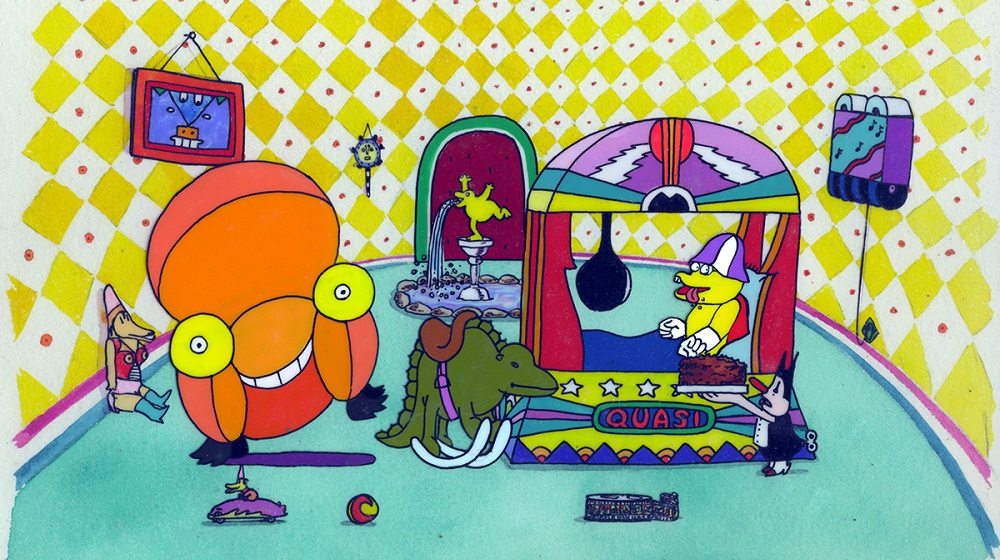Xcèntric 2023-2024
"Open door to fantasyland". Sally Cruikshank's animations.
Audiovisuals
Driven by the desire and curiosity to see her drawings move, Sally Cruikshank studied animation at the Art Institute of San Francisco in the early 1970s and soon became one of the most outstanding and original figures in experimental animation. Influenced by the classic cartoons of the 1930s (Max Fleischer, Winsor McCay and Carl Barks) and underground comics (Robert Crumb), her films are characterised by an overflowing, hallucinatory imagination, a psychedelic visual style with a retro feel, eccentric anthropomorphic characters and a surreal, frenetic and anarchic narrative peppered with her own particular sense of humour.
Cruikshank made her first animated short, Ducky (1971), with a 16 mm Bolex camera attached to a photo enlarger. Made with watercolours and animation on paper, it already features a prototype of Quasi, the character who'd reappear in her future works in his definitive form: a yellow duck with a red cape and thick glasses. Encouraged by this first experience, Cruikshank enrolled at the Art Institute of San Francisco where, under the tutelage of the filmmaker Larry Jordan, she produced her second animation, Fun on Mars (1971), in which she used watercolours, crayons, cut-outs and collage as well as watercolours. For her third animation, Chow Fun! (1972), she alternated between paper animation and cut-outs pasted on animation cells.
Her best-known work is Quasi at the Quackadero (1975), one of the first countercultural films to become popular on the midnight screening circuit (as would also happen with Suzan Pitt's Asparagus a couple of years later). It's a bizarre adventure starring two talking ducks, Quasi and Anita, a foul-mouthed femme fatale voiced by the filmmaker herself, who visit a crazy amusement park where they can take home a picture of their thoughts, meet their previous reincarnations and also travel back in time. Painstakingly drawn on transparent acetates, and with occasional help from animator friends, the film took two years to complete. Together with Make Me Psychic (1978) and Quasi's Cabaret Trailer (1980), which feature the same main characters, this film makes up her "Art Deco" trilogy, a visual style dear to the artist's heart which she takes to a personal level by infusing it with her trademark vivid colours and hallucinogenic surrealism.
In the following years, Cruikshank combined creating her own independent short films with making commercials and credit sequences and animations for Hollywood films, as well as collaborations for Sesame Street, where many other experimental animators such as Al Jarnow and Jane Aaron also worked.
Sally Cruikshank's films never get old because they exist in their own, absolutely free universe in which anything can happen. In the words of the author herself, "Animation is this sort of open door to fantasyland, you're only limited by what you can draw".
Sally Cruikshank: Ducky, 1971, 16 mm, 3.5'; Fun on Mars, 1971, 16 mm, 4.5'; Chow Fun!, 1972, 16 mm, 4'; Quasi at the Quackadero, 1976, 35 mm, 10'; Make Me Psychic, 1978, 35 mm, 8'; Quasi's Cabaret Trailer, 1980, 35 mm, 2.5'; Face like a Frog, 1988, 35 mm, 5.5'.
16 and 35mm projection. Original version with catalan subtitles.
Copies from the Academy Film Archive.
Directors: Sally Cruikshank
This activity is part of Xcèntric 2023-2024



